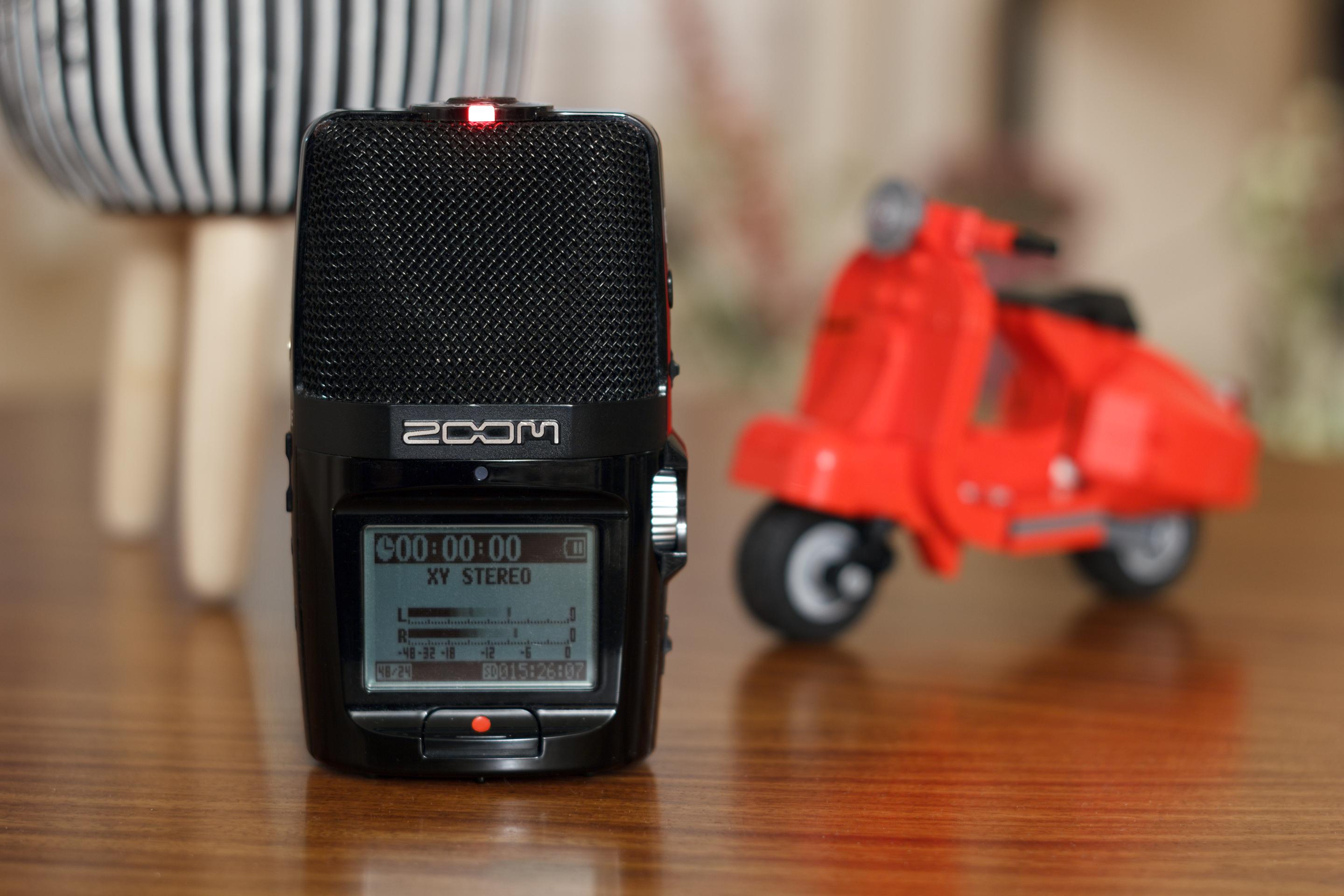The Zoom H2n is a versatile recorder that has served me well since 2012. I’ve used it to make field recordings, voice overs, and even for ham radio to record satellite passes.
Review
The Zoom H2n can record from it’s four capsules in four modes:
- XY: 90° Stereo XY pattern
- Mid-Side: Front facing and a figure 8 side capsule with adjustable pattern or raw recording. (default 0dB = 120°)
- 2 Channel Surround: 360 recording from the XY and MS capsules
- 4 Channel Surround: Split files from the XY and MS capsules
The H2n can record at up to 24bit/96kHz in WAV or MP3 from the internal microphones or an external input. The H2n comes with a 4 GB SD card, but if you plan on recording 24bit/96kHz WAV files, I suggest using a larger capacity card.
You can monitor your audio with the headphone jack and the onboard VU meter. I try to keep my recordings peaking under -12 dB so there’s some headroom available.
There are some onboard DSP effects like an 80 Hz low cut filter, limiter, and compressor. I don’t recommend using these because they are applied after the analog to digital converter and won’t stop your signal from clipping. The clipping light still flashes, but the VU meter shows the limited level being recorded. This can make setting levels confusing and gives a false sense of security because you aren’t seeing the real levels hitting the ADC. You can edit your files later to apply these types of effects. Free software like Audacity will do the job.
I occasionally use the onboard USB audio interface feature which comes in extremely handy. I wouldn’t buy another recorder without this feature. Sometimes you just need a quick audio solution, and I don’t want to take apart my Audient ID14 from my desktop setup.
I’ve had great success using this microphone to make field recordings, voice overs, ham radio recordings, digitizing analog media, and more.
Issues
The Zoom H2n is not without it’s problems. My unit has a channel imbalance where the right channel is a little louder than the left. The self noise isn’t the greatest either. The biggest issue is handling noise. You can forget about holding this recorder and using the internal mics. The plastic body creaks, the buttons rattle. These will ruin your recordings. It’s best to have the recorder on a steady surface or a tripod. Zoom should have shock mounted the capsules better.
The recorder also suffers from interference. Make sure your recorder is not near your phone and no external microphone or headphone cables are near your phone.
Example: External mic with the cable passing over my phone in my pocket:
You will also get interference if you plug in an external mic and hold the recorder with your thumb on the screen. Yes, this is as stupid as it sounds.
The USB SD Card Reader is very slow. Zoom is still selling this recorder in 2023 with an archaic USB 2.0 Mini-B. Ok I’ll admit have a soft spot for this connector because it’s not complete utter garbage like Micro USB, but come on, it’s time to update this thing to USB 3.1 Type-C. And if we’re going that far, please add onboard NiMH battery charging. Olympus can do this already.
In 2021 after 3 years of daily use for ham radio satellite recordings I had an awful scratchy noise when I unplugged the external mic cable. I took the recorder apart, reflowed the solder on the connector and the noise went away.
In 2023 the glue on the front grill got loose. I reattached the grill with hot glue.
Conclusion
I’ve had this recorder for 11 years at the time of writing. It’s held up well. It has an interesting array of microphone options and it’s a cheap way to make surround recordings. I’m not sure I would recommend it in 2023 as there are other options for small field recorders with lower noise and better build quality.
My wishlist for a new recorder:
- Low noise
- Metal enclosure
- USB Type-C
- Internal charging
- 32 Bit (is it a meme idk)
